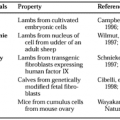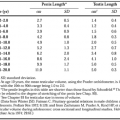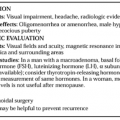THYROTROPIN
Part of “CHAPTER 33 – THYROID FUNCTION TESTS“
Serum thyrotropin (thyroid-stimulating hormone, TSH) has been a reliable indicator of primary hypothyroidism, with levels rising even when thyroid deficiency is mild and the T4 level is still normal (see Chap. 15 and Chap. 45). Distinguishing euthyroid patients from those with mild hyperthyroidism based on a suppressed TSH level has been encumbered by inadequate assay sensitivity. Although RIAs were developed that could detect TSH concentrations of 0.1 to 0.3 μU/mL, this sensitivity was achieved by extensive purification of the radioligand and concentration of specimens. Commercially available RIAs have not provided quantitative values below 1 μU/mL.
Many second-generation assays detect TSH in the range of 0.1 to 0.5 μU/mL, and third-generation assays have an even 10-fold greater functional sensitivity24,25 and 26 (Fig. 33-2). The first-generation RIA relies on a radiolabeled antigen and a single polyclonal antibody. The newer IRMAs use two or three antibodies (one or two are radiolabeled). These monoclonal antibodies are directed at the TSH subunits or at some specific epitopes on the TSH molecule (Fig. 33-3). This provides a more stable radioligand and a higher assay sensitivity. EIAs for TSH also use several monoclonal antibodies and have similar performance characteristics. They rely on colorimetry, however, and are affected by lipemic and hemolyzed samples.
Stay updated, free articles. Join our Telegram channel

Full access? Get Clinical Tree






